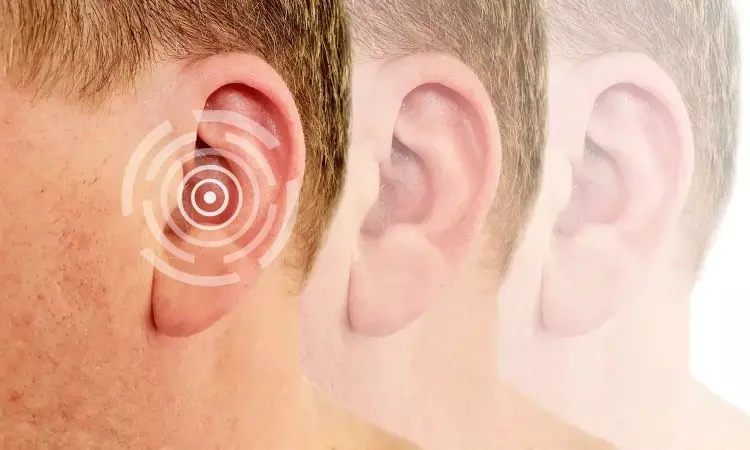- Home
- Medical news & Guidelines
- Anesthesiology
- Cardiology and CTVS
- Critical Care
- Dentistry
- Dermatology
- Diabetes and Endocrinology
- ENT
- Gastroenterology
- Medicine
- Nephrology
- Neurology
- Obstretics-Gynaecology
- Oncology
- Ophthalmology
- Orthopaedics
- Pediatrics-Neonatology
- Psychiatry
- Pulmonology
- Radiology
- Surgery
- Urology
- Laboratory Medicine
- Diet
- Nursing
- Paramedical
- Physiotherapy
- Health news
- Fact Check
- Bone Health Fact Check
- Brain Health Fact Check
- Cancer Related Fact Check
- Child Care Fact Check
- Dental and oral health fact check
- Diabetes and metabolic health fact check
- Diet and Nutrition Fact Check
- Eye and ENT Care Fact Check
- Fitness fact check
- Gut health fact check
- Heart health fact check
- Kidney health fact check
- Medical education fact check
- Men's health fact check
- Respiratory fact check
- Skin and hair care fact check
- Vaccine and Immunization fact check
- Women's health fact check
- AYUSH
- State News
- Andaman and Nicobar Islands
- Andhra Pradesh
- Arunachal Pradesh
- Assam
- Bihar
- Chandigarh
- Chattisgarh
- Dadra and Nagar Haveli
- Daman and Diu
- Delhi
- Goa
- Gujarat
- Haryana
- Himachal Pradesh
- Jammu & Kashmir
- Jharkhand
- Karnataka
- Kerala
- Ladakh
- Lakshadweep
- Madhya Pradesh
- Maharashtra
- Manipur
- Meghalaya
- Mizoram
- Nagaland
- Odisha
- Puducherry
- Punjab
- Rajasthan
- Sikkim
- Tamil Nadu
- Telangana
- Tripura
- Uttar Pradesh
- Uttrakhand
- West Bengal
- Medical Education
- Industry
Using inside-out raising mucosal-tympanomeatal flap technique effective for repair of large marginal perforations

A prospective case series evaluating a novel surgical technique, known as the inside-out raising mucosal-tympanomeatal flap technique, has shown promising outcomes in repairing large marginal perforations in the ear and improving hearing. This study was published in the journal BMC Surgery by Yangting Zhang and Zhengcai Lou.
Researchers enrolled 48 patients with large marginal perforations who underwent endoscopic cartilage myringoplasty using this innovative technique. The study aimed to assess graft success rates, hearing outcomes, and complications at the 12-month postoperative mark.
The findings revealed encouraging results. Among the participants, 81% had large perforations, 14.6% had subtotal perforations, and only 4.2% exhibited total perforations. The surgical procedure's mean duration was recorded at 38.6 ± 7.1 minutes.
At the 12-month follow-up, the graft success rate was an impressive 89.6% (43 out of 48 patients). Additionally, hearing outcomes significantly improved, as indicated by a reduction in the mean air-bone gap from 25.6 ± 5.2 dB preoperatively to 16.5 ± 4.1 dB postoperatively at 12 months (p = 0.001). This improvement reflects a substantial enhancement in hearing abilities following the surgical intervention.
Moreover, the study reported a functional success rate of 85.4% (41 out of 48 patients), signifying positive outcomes beyond just graft success. Notably, none of the patients experienced worsened sensorineural hearing loss or complications related to the graft, such as lateralization, significant blunting, or medialization, during the follow-up period.
The conclusion drawn from this study suggests that employing the inside-out raising mucosal-tympanomeatal flap technique for endoscopic cartilage-perichondrium myringoplasty in repairing large marginal perforations yields satisfactory graft outcomes with minimal complications. This novel technique offers hope for individuals with such ear perforations, showing potential as a reliable and effective surgical approach.
This study's results signify a significant advancement in ear surgery techniques and highlight the potential of innovative approaches to improve patient outcomes in ear-related procedures.
Reference:
Zhang, Y., & Lou, Z. Inside-out raising mucosal-tympanomeatal flap approach for the repair of large marginal perforations. BMC Surgery,2023;23(1). https://doi.org/10.1186/s12893-023-02286-y
Dr Riya Dave has completed dentistry from Gujarat University in 2022. She is a dentist and accomplished medical and scientific writer known for her commitment to bridging the gap between clinical expertise and accessible healthcare information. She has been actively involved in writing blogs related to health and wellness.
Dr Kamal Kant Kohli-MBBS, DTCD- a chest specialist with more than 30 years of practice and a flair for writing clinical articles, Dr Kamal Kant Kohli joined Medical Dialogues as a Chief Editor of Medical News. Besides writing articles, as an editor, he proofreads and verifies all the medical content published on Medical Dialogues including those coming from journals, studies,medical conferences,guidelines etc. Email: drkohli@medicaldialogues.in. Contact no. 011-43720751


